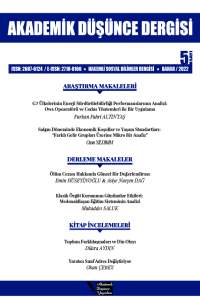İKİ SAVAŞ ARASI DÖNEM VÜRBİTSA'DAN VERNİSİKİA'YA BULGAR-BİZANS İLİŞKİLERİ 811-813
802 tarihinde Tuna Bulgar Devleti tahtına çıkan Kurum Han ile beraber, Bulgarların yükseliş dönemi başlamıştır. Tuna Bulgar Devleti’nin ve Bizans İmparatorluğunun Balkan coğrafyasını hâkimiyet altına alma politikası bu dönemde iki devletin siyasi olarak karşı karşıya gelmelerindeki en önemli sebeplerden biri olmuştur. Kurum Han döneminde Bulgarlar nüfuslarının az olmasına rağmen hızlı ve dayanıklı ordu yapıları sayesinde asker sayısı bakımından ve donanım olarak da çok üstün durumda bulunan Bizans İmparatorluğunu, savaşlarda yenmişlerdir. Zira bu galibiyetlerin alınması, Bizans imparatorluğunun içinde bulunduğu askerî ve siyasî krizlerin etkisiyle yaşanmıştı. I. Nikephoros’un ardından tahta çıkan oğlu Stavrakios’un ölümü ve İmparator Mihael’in tahta çıkması Bizans İmparatorluğundaki durumu değiştirmemiş ve psikolojik üstünlük ise Bulgarlarda kalmıştır. Bizans sınır kalelerini ele geçirmeye başlayan Kurum Han'a karşı kesin sonuç almak isteyen İmparator Mihael, Vernisikia Savaşı'nda yenilmiş ve tahta İmparator Leo çıkmıştır. Böylece Kurum Han, iki imparatoru öldürmüş ve diğerini de tahtından inmesine sebep olmuştur. Çalışmamızda 811 Vürbitsa Savaşı sonrası, Bulgar Bizans ilişkileri konu edilmiş ve Vernisikia savaşından sonraki Kurum Han’ın ilk İstanbul seferi dâhil olarak incelenmiştir.
Anahtar Kelimeler:
Bulgar, Kurum Han, Vürbitsa, Vernisikia, Bizans
Between the Two Wars Period: Bulgarian-Byzantine Relations From Vürbitsa to Vernisikia 811-813.
With Kurum Khan, who ascended the throne of the Danube Bulgarian State in 802, the period of the rise of the Bulgarians began. The policy of the Danube Bulgarian State and the Byzantine Empire to dominate the Balkan geography was one of the most important reasons for the two states' political confrontation in this period. In the period of Kurum Khan, the Bulgarians, despite their small population, defeated the Byzantine Empire, which was far superior to in terms of numbers and military equipment, thanks to their fast and durable army structures in the wars that took place. It is a fact that these victories were influenced by both the military and the political crises of the Byzantine Empire. The death of his son Staurakios, who ascended the throne after Nikephoros I, and the accession of Emperor Mihael did not change the situation in the Byzantine Empire, and the psychological superiority remained with the Bulgarians. Emperor Mihael, who wanted to get a final result against Kurum Han, who started to seize the Byzantine border castles, was defeated in the Vernisikia War and Emperor Leo ascended the throne. Thus, Kurum Khan killed two emperors and dethroned the other. In our study, the Bulgarian-Byzantine relations after the 811 Vürbitsa War were discussed and the first Istanbul expedition of Kurum Han after the Vernisikia war was examined.
Keywords:
Bulgar, Khan Krum, Vürbitsa, Vernisikia, Byzantium,
___
- Ahmetbeyoğlu, A. (2023). Hanlıktan Çarlığa Bulgar Türkleri Tarihi (1.Baskı). İstanbul: Bilgeoğuz Yayınları. Avcı, C. (2020). İslam-Bizans İlişikleri 610,847. Ankara: Türk Tarih Kurumu Yayınları.
- Batty, R. (2007). Rome and the Nomads The Pontic-Danubian Ralm İn Antiquityi. New York: Oxford University Press.
- Browning, R. (1965). Byzantium and Bulgaria: A Comparative Study Across the Early Medieval Frontier. Londra: Temple Smith.
- Brubaker, L. (1996). Byzantium İn the Ninth Century: Dead or Alive?. Birmingham: Routledge.
- Bury, J B. (1912). Eastern Roman Empire. Londra: Macmilla And Co. Limited.
- Charizanis, G. (2021). “Byzantine-Bulgaria Relations (7th-10th c.) Periods of Peace”. Yura Konstantinova-Eleonora Naxidou (Ed.) Greeks And Bulgarians Parallels And İntersections İn History And Culture. Sofya: Bulgarian Academy Of Sciences İnstitute of Balkan Studies with Centre of Thracology, 57-69.
- Curta, F. (2019). Eastern Europe in the Middle Ages (500–1300). Leiden/Boston: Brill Publishing. Fine, J. (2000). The Early Medieval Balkans. USA: The University of Michigan.
- ISSN: 2687-6124
- Yayın Aralığı: Yılda 2 Sayı
- Başlangıç: 2020
- Yayıncı: Akademik Düşünce Enstitüsü
Sayıdaki Diğer Makaleler
KİTAP İNCELEMESİ: DÜNYANIN TEKDÜZELEŞMESİ MÜPHEMLİK VE ÇEŞİTLİLİK KAYBI ÜZERİNE
BİYOÇEŞİTLİLİK: NE, NİÇİN, NASIL?
İKİ SAVAŞ ARASI DÖNEM VÜRBİTSA'DAN VERNİSİKİA'YA BULGAR-BİZANS İLİŞKİLERİ 811-813
12 MART MUHTIRASI VE MİLLİ GÜVEN PARTİSİ'NİN YAKLAŞIMI ÜZERİNE BİR DEĞERLENDİRME
MC DONALDS’LAŞMA BAĞLAMINDA DÜNYA KENTİ ADAYI OLARAK İSTANBUL ÜZERİNE BİR DEĞERLENDİRME
DEPREM VE GÖÇ İLİŞKİSİ ÜZERİNE BİR DEĞERLENDİRME
KİTAP İNCELEMESİ: KÜRESEL GIDA GÜVENLİĞİ (GERÇEKLER-ÇAĞRILAR-PERSPEKTİFLER)
